It’s one of the most famous - some might say notorious - industrial facilities in the world. Europe’s largest nuclear site occupies a 700-acre patch of coast in West Cumbria, ten miles south of Whitehaven.
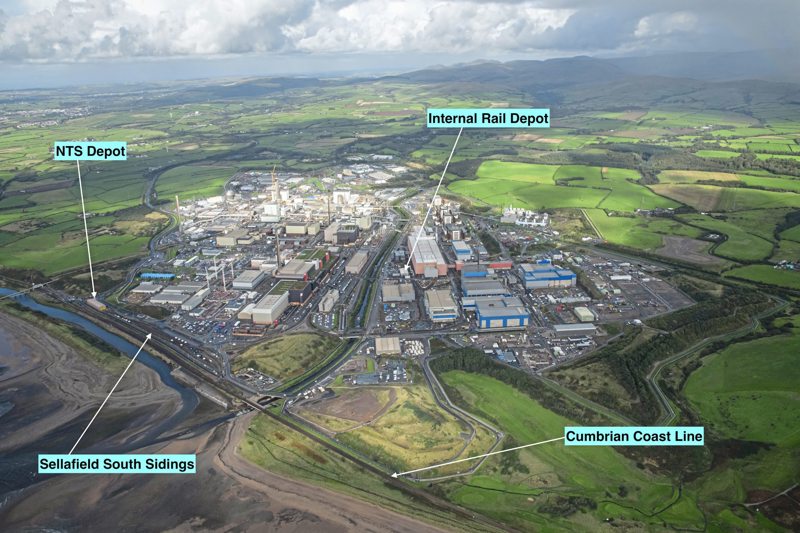
This aerial view of the site from 2021 highlights the number of buildings, vast internal network of lines, and extent of the sprawling site.
Complex operations
With around 11,000 staff (up to 9,000 of whom are on site on a normal working day), its own police and security forces and miles of rail and road networks, it’s equivalent to a small town - albeit one with around 1,000 buildings and more than 200 tightly guarded nuclear facilities.
It’s also the most diverse nuclear site in the world and has been essential to the economy of the region since the end of the Second World War.
Supporting up to 40,000 indirect jobs - everything from construction contractors to park-and-ride bus drivers - it’s estimated that Sellafield is worth around £2.1 billion a year to Cumbria.
For 75 years, it has fulfilled a wide range of roles, including:
- Producing weapons-grade plutonium for early atomic weapons in the aftermath of the Second World War
- The world’s first commercial nuclear power station supplying electricity to the National Grid
- Reprocessing and storing nuclear fuel
- Processing lower grades of radioactive waste for off-site storage
- Being home to the UK’s National Nuclear Laboratory
By any measure, it’s a significant place - nationally and internationally important to the nuclear sector both as a facility and a world leader in the processes and technologies for handling dangerous radioactive materials.
Since its early days, it’s also been important to the railway as a source of freight traffic and workers commuting in from local towns and villages to its seaside station.
Security by rail
Over the years, the railway has been the safest way to move hazardous chemicals, radioactive waste, fuel for Royal Navy nuclear submarines and imported fuel for reprocessing, as well as flasks containing fuel rods to and from British power stations.
Without Sellafield, the economics of the wonderfully scenic Cumbrian Coast Line between Barrow and Whitehaven would be very shaky indeed, especially since the loss of the area’s other traditional industries.
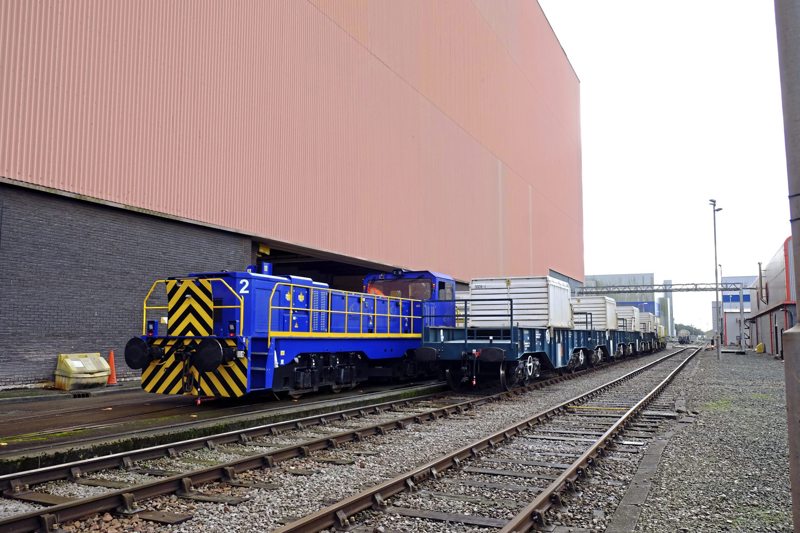
CBD No. 2 shunts FNA-D flask wagons outside the Fuel Handling Plant (FHP) on November 6, 2023. Flask wagons are shunted inside for unloading under strict safety regulations. The structure is one of more than 1000 buildings on site.
But that reliance on railways doesn’t end at the formidable security gates of the plant. Within the huge site, there’s an extensive internal rail network that remains essential to the safe and efficient operation of the site.
Although Calder Hall Power Station closed in 2003, and reprocessing of spent fuel ended in 2022, Sellafield’s ongoing role in receiving, stripping and storing nuclear fuel from decommissioned power stations will continue to provide work for its 11-mile internal rail network for many years to come.
Dedicated team
“The main role of the railway is to get flasks from the railhead to the Fuel Handling Plant,” says Mark McSherry, Sellafield Ltd’s rail operations manager. McSherry leads a dedicated rail team of 36 staff operating in three shifts, 16 hours a day, seven days a week.
“We used to run 24 hours a day, but there’s no need now as the traffic has reduced. Our main customer is EDF, which sends us around 13 or 14 flasks a week from various power stations around the country.”
Fleet analysis
The main line fleet consists of 40 FNA-D flask wagons, 27 PFA two-axle container flats, six huge KXA-C eight-axle ‘Flatrol’ wagons designed to carry 110-tonne international flasks to and from Barrow Docks, and two 150-tonne-capacity French-built KUA wagons with distinctive silver sliding hoods for MoD traffic, also carried on four bogies to spread the weight.
The last-mentioned work ‘as required’ under tight security between Sellafield and Royal Navy dockyards at Devonport or Rosyth, usually accompanied by DRS’s Mk. 2 escort coaches and armed guards.
Rolling stock upgrades
Much more rarely seen are the bespoke internal wagons, which never venture beyond the boundary fence. This fleet includes around 20 ‘skeleton’ wagons for moving various types of containers between buildings and 13 stainless steel-clad internal flask wagons of similar design to the previous generation of main line FNAs, which were replaced in 2018.
No longer used for moving flasks for reprocessing, these wagons are now only employed moving stored flasks around the plant.
“We’re gradually overhauling and upgrading the internal fleet, but it’s difficult to buy new vehicles, as they’re bespoke and designed exactly for our requirements” says McSherry.
Zero-emission locomotives
The most significant change to Sellafield’s internal rail fleet arrived in 2021, in the form of two new Clayton CBD80 battery-diesel hybrid shunting locomotives.
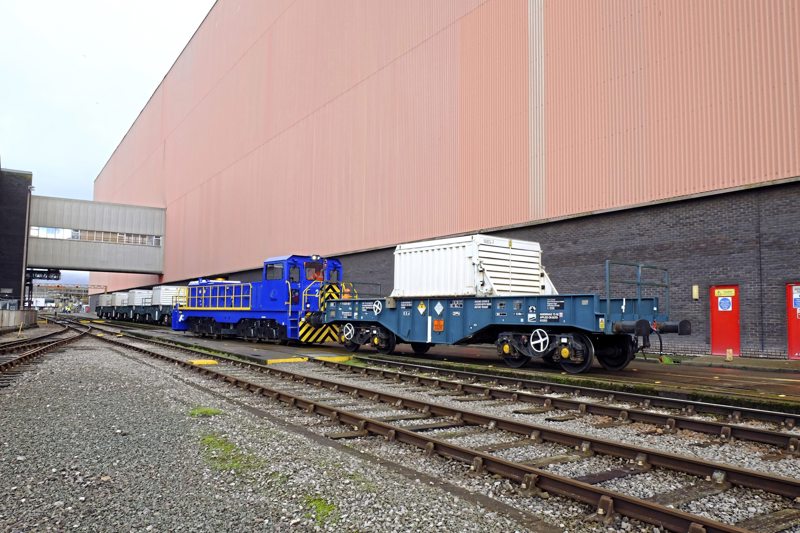
Costing more than £2 million each, Clayton CBD80 Nos. 1 and 2 (works numbers B4659/1 and B4659/2 respectively) replaced six elderly industrial diesel locomotives, which worked at the site for many years.
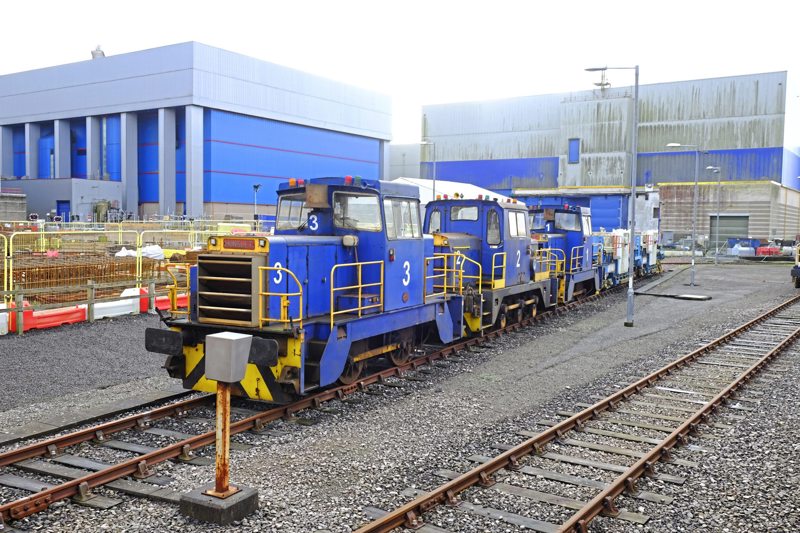
Made redundant by the new CBD80 'Bo-Bos' from Clayton Equipment, a row of two surplus Hunslet diesel-hydraulic locomotives Nos. 1 and 3, and Thomas Hill 0-6-0DH No.2 line up with two internal 'skeleton' wagons on November 6, 2023.
The CBD80s have transformed operations on the Sellafield internal network. Although they are fitted with a diesel engine to charge the batteries, it is rarely needed, and the nature of operations means that the locomotives can run for ten days before the batteries need to be charged.
“We’re limited by train length rather than weight now,” explains McSherry. “A CBD80 can manage 640t uphill, rather than the previous 600t maximum. The new locomotives take it in their stride, but you were on the limit with the old diesels.
“Battery locomotives give us another unique advantage too. The storage buildings here have lower air pressure inside to prevent radiation leaks, which means that they suck air in from outside.
“With the CBD80s, there are no diesel fumes to be sucked inside, which improves the air quality for everyone.”
The Clayton pair will be joined in January 2024 by a smaller CBD40 two-axle shunter, acquired for lighter duties and to serve parts of the network the CBD80s can’t reach.
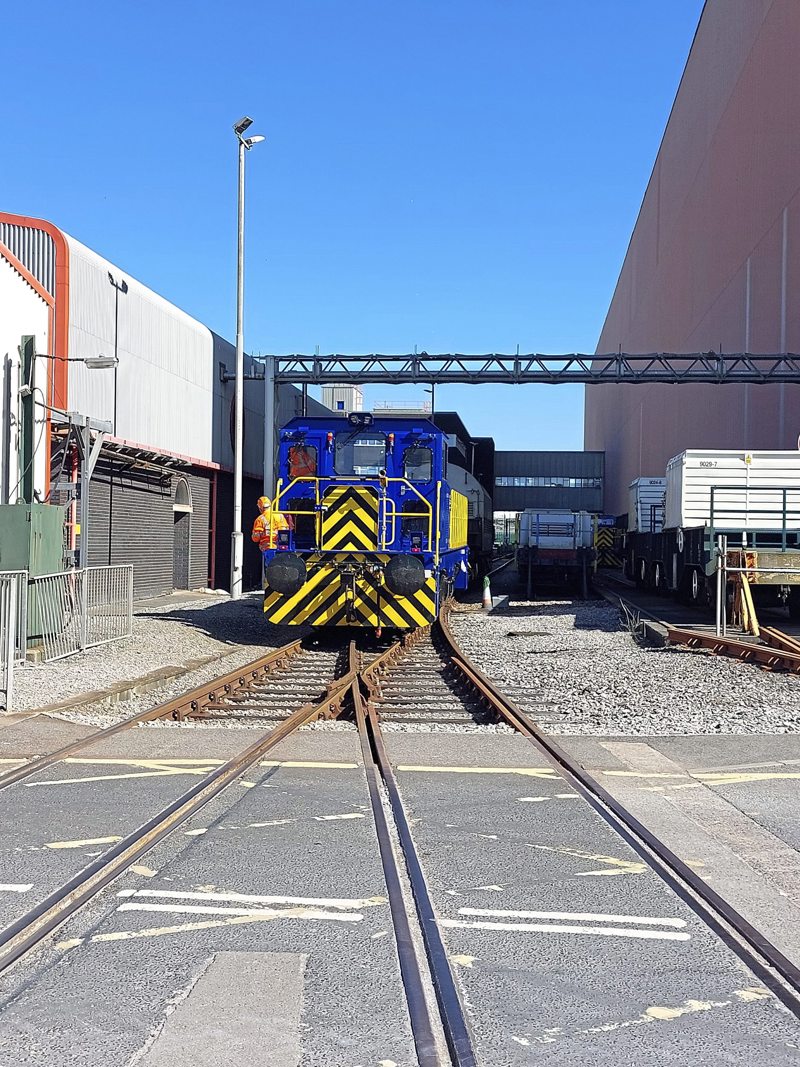
The internal rail network operates a strict safety regime, with three operating zones. When a train enters a zone, all road traffic is halted at crossings, with only one train permitted to move in each zone.
New industry contracts
With around £8bn worth of construction work currently taking place to create new waste management facilities, and the manufacturing of tens of thousands of new waste containers, it’s a very busy site and every effort is made to ensure internal rail movements are safe.
“We try to operate as close to main line rules as we can. We have regular independent inspections and work with the Office of Rail and Road (ORR) to ensure we are as safe as possible,” says McSherry.
Long-term vision
Specialised wagons for unusual loads have always been a rarity on the railway, but with the disappearance of traditional heavy industries and the loss of more ‘difficult’ traffic to road haulage, the DRS vehicles are now the last of their kind on the British network. Like everything related to the nuclear industry, this specialist equipment is based on a significant, long-term investment.
“Nuclear is part of our future for the next 100 years,” says Oliver Schepisi, Head of Operations for DRS’s parent organisation, Nuclear Transport Solutions (NTS).
“For the next eight years, operations will remain pretty much stable, but beyond 2032 all the old nuclear power stations will be closed. We don’t yet know what the requirements will be for the new generation of power stations , but it will be nuclear-related.
“For us, it’s not about cost, it’s about performance. Safety and reliability are essential for nuclear traffic, which remains our core business. We’ve taken that approach to non-nuclear commercial traffic, where customers such as Tesco demand high performance.”
With decommissioning, storage and clearance work set to continue for at least the next century, and final costs predicted to exceed £120 billion, it looks likely that the internal rail network and the Cumbrian Coast Line will go on serving this uniquely challenging site for decades to come, providing much-needed jobs and economic support for a remote region of northwest England.
Thanks to Ben Chilton, Mark McSherry and the Sellafield Ltd Rail Team, and Andrew Butler, Oliver Schepisi and Danni Wilson of Nuclear Transport Solutions for making this feature possible.














Login to comment
Comments
Nigel Rees - 11/01/2024 14:28
About forty years ago I went to the Sellafield visitor centre. Is this still open? Would there be any opportunity in seeing any of the locomotives and stock at the site?